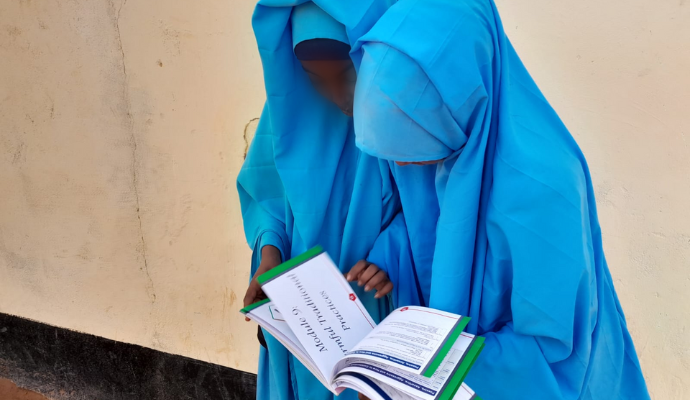
Adolescent girls in Kenya and other countries in sub-Saharan Africa face a myriad of vulnerabilities including household poverty, violence, limited education opportunities, and a lack of economic opportunities and independence.
These vulnerabilities increase the risks of girls experiencing adverse outcomes including school drop-out, early sexual initiation, unintended pregnancy, and early marriage. Any of these outcomes are likely to significantly impact adolescent girls’ health, education, and socioeconomic status throughout their lives.
In 2015, we embarked on a journey to understand what package of multisectoral interventions worked to improve adolescent girls’ education and health outcomes. We also wanted to know if intervening early—before adolescent girls experienced negative life events—could support a more successful transition to adulthood.
The research program, Adolescent Girls Initiative–Kenya (AGI-K), evaluated the mid- and long-term impact of a multisectoral, multilevel (girl-, household-, and community-level) intervention for adolescent girls aged 11 to 15 years from rural Wajir. The randomized controlled trial consisted of four components:
- Community-based violence prevention program (V)
- Education conditional cash transfer (CCT) (E)
- Health-focused girls’ empowerment clubs (H)
- Wealth creation for girls via financial education and savings activities (W)
The goal of AGI–K was not to test a single-sector intervention but to test multisectoral packages of interventions.
We implemented the program in Wajir, the second poorest county in Kenya. Wajir is a semi-arid area with little arable land and characterized by low population density, minimal infrastructure, and limited electricity coverage. According to the Kenya Demographic and Health Survey 2014, more than three-quarters of women aged 15–49 years have never attended school; 53% of the 20–24-year-olds were married at 18; and the total fertility rate was 7.8, the highest in the country.
A total of 3,400 girls from Wajir participated in different components of the intervention, grouped as follows:
- Violence prevention (V-only)
- Violence and education (VE)
- Violence, education, and health (VEH)
- Violence, education, health, and wealth (VEHW)
Research data were collected at four points to understand the effects over time.
Data were collected in 2015 before the rollout of the intervention; in 2017 at the end of the two-year intervention; in 2019 two years after the intervention was completed; and in 2021 four years after the intervention was completed.
Two years after the intervention ended (2019), when compared to the violence-prevention–only group, girls who were out of school at the start of the program and who had received an education conditional cash transfer were almost three times as likely to be enrolled in school (45% v. 16%), and significantly less likely to be married (30% v. 50%) or ever pregnant (17% v. 34%).
Four years after the start of the program, the girls, who were now 17–21 years old, were still experiencing positive impacts.
Among girls who were out of school in 2015, girls in the three groups with an education conditional cash transfer were two-thirds less likely to be married (48% vs. 68%) and have had their first child (36% vs. 52%), and five times as likely to be in school (36% vs. 7%).
Additionally, girls in the program were significantly less likely to have had a stillbirth (3% in the violence-education-health-and-wealth group compared to 10% in violence-prevention-only).
The findings demonstrate that multisectoral and multilevel programming can significantly increase school enrollment and reduce early marriage and childbearing, resulting in improved health and well-being for the girls and their future children.
Additionally, we now know that addressing the barriers to gender equality requires an early start to achieve long-term education and health outcomes over the course of adolescents’ lives. Programs must address not only the timing but also consider the socio-historical and geographic context.
All three intervention groups that showed significant findings included an education conditional transfer component—suggesting that cash transfers, when delivered among other supportive interventions, can be effective in the long term if provided during early adolescence, a critical window of vulnerability.
Building on these important findings, we are currently testing the impact of a similar model delivered by the Wajir County government to assess for impact, feasibility, and cost-effectiveness at scale.
We also seek to assess changes across generations—to understand the program’s effect on the children of adolescents, as the girls finish school and start having families.
Read research publications from the Adolescent Girls Initiative–Kenya.
